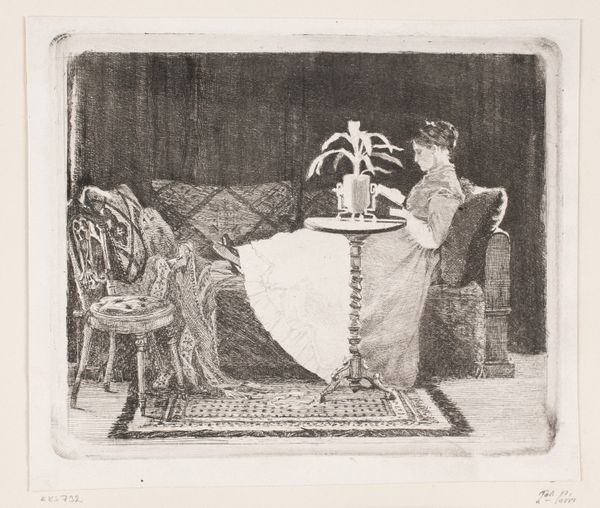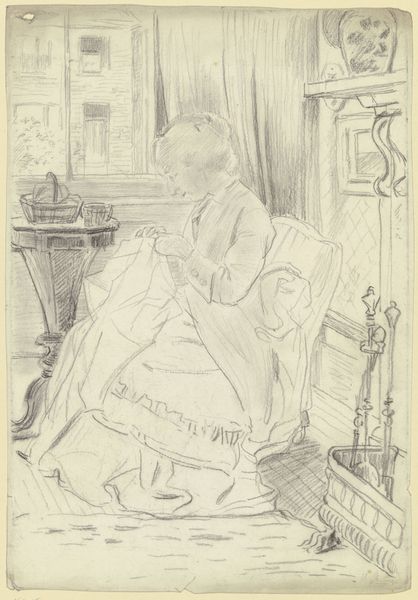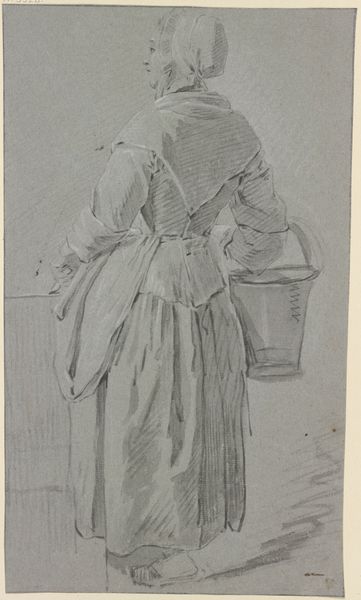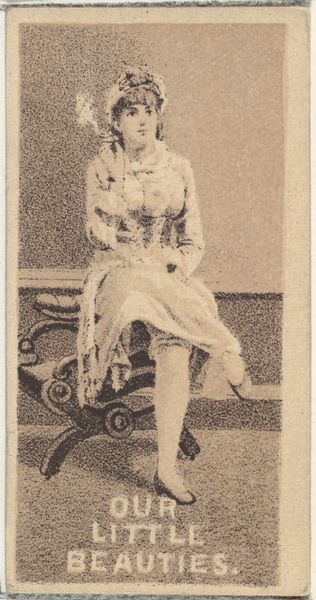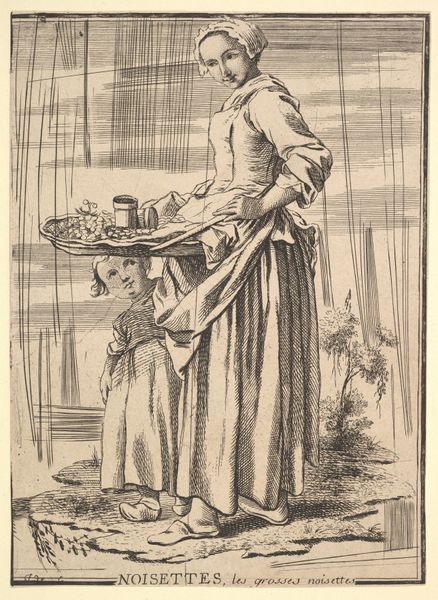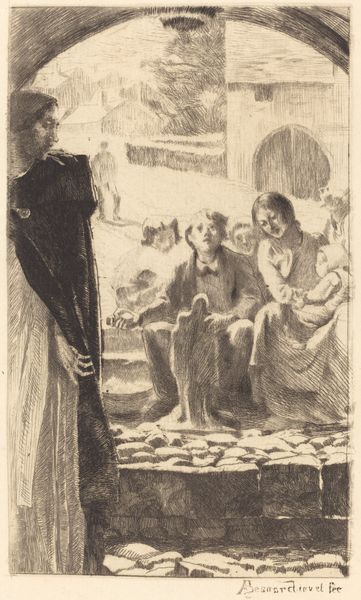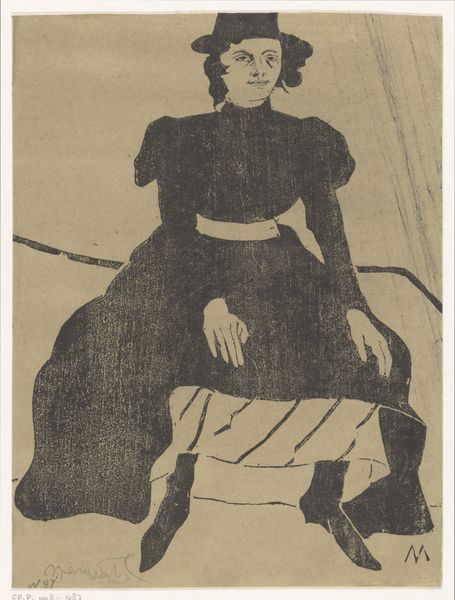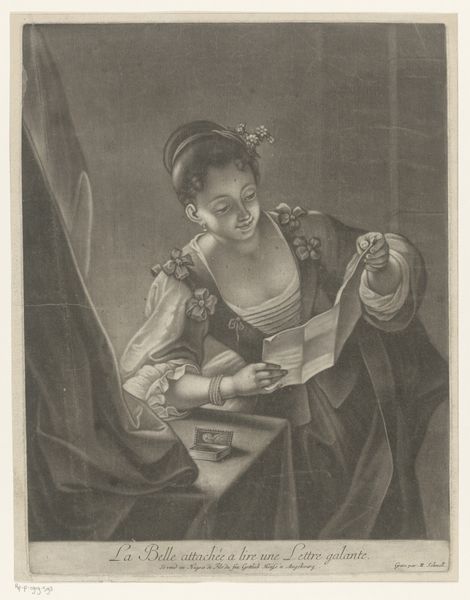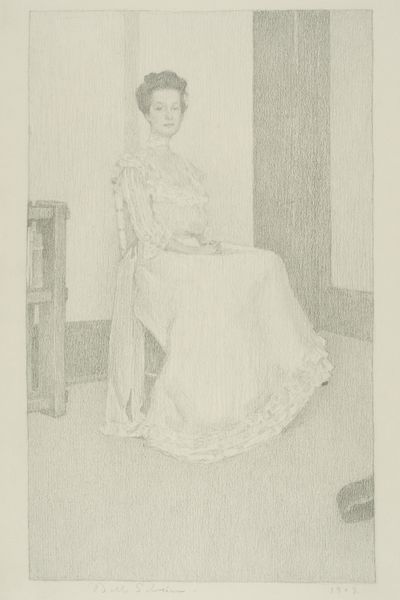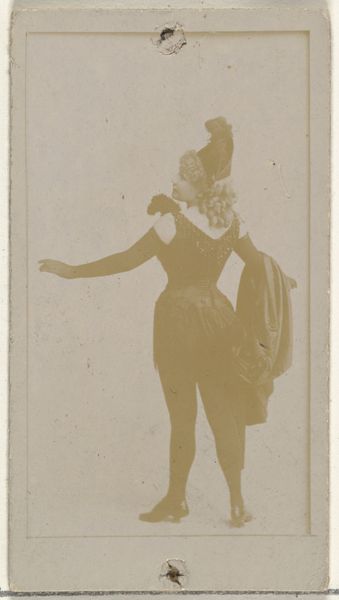
drawing, print, pencil
portrait
drawing
impressionism
pencil sketch
charcoal drawing
pencil drawing
pencil
genre-painting
Dimensions: sheet: 26 9/16 x 22 1/16 in. (67.4 x 56 cm) plate: 19 11/16 x 10 5/8 in. (50 x 27 cm)
Copyright: Public Domain
Editor: Right, so this is James Tissot’s "Morning," a pencil drawing from 1886, currently at the Met. The detail is just stunning! There's almost a photographic quality to it, and yet it feels very intimate, like a fleeting moment captured. How do you interpret this work? Curator: It's fascinating how Tissot captures a sense of cultural memory here. Think about the "genre scene"—domestic service was heavily coded in Victorian society. The maid, bearing the morning tea, becomes a visual shorthand for a particular class structure, and even expectations of women. Editor: So the image carries symbolic weight beyond just being a nice picture? Curator: Precisely. Notice how the setting, even rendered in pencil, suggests a certain affluence? The silhouette portraits on the wall, the elaborate tea set – they reinforce the idea of social hierarchy. And consider the gaze of the woman—is it inviting, compliant, something else entirely? What associations does her stare evoke? Editor: I hadn't considered that. Her direct gaze is somewhat unnerving now that you mention it. I initially saw her as simply a domestic figure, but now there's an unsettling subtext of labor and the expectations placed upon women. Curator: Exactly! And that ambiguity is precisely where the image's power lies. Visual symbols carry within them cultural echoes that speak differently to each viewer, as our present selves re-encounter the past. Even the choice of medium, pencil drawing, reinforces that notion: delicate, refined, yet reproducible. Editor: That makes me think about how art helps to define social structures. The seemingly mundane task is elevated to an illustration of status and labor. Curator: Yes! It is indeed. A window into history viewed through symbolic framing! What started out as an appreciation of "detail" quickly morphs into unpacking all of those cultural narratives that an image can encompass.
Comments
No comments
Be the first to comment and join the conversation on the ultimate creative platform.

